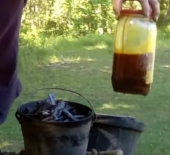
 1
1




 2
2




 1
1




 6
6





 4
4





 4
4





 3
3





 2
2




 4
4




Riley Smith wrote:Thanks to all who commented. I am actually interested in using bamboo as feed for cows, goats, etc. Leafy bamboo is a cultivar (think that's the name) that might be particularly good for this.
However, I don't think my title was clear.
I want to know if bamboo will make good charcoal. If it is worth planting bamboo in order to harvest it, dry it, then turn it into charcoal. I also want to know if it is worth it in terms of doing this with hardwood.

 2
2




Check out Redhawk's soil series: https://permies.com/wiki/redhawk-soil
 2
2




 1
1




Riley Smith wrote:I like the idea of growing a good chunk of bamboo in order to dry, then use as feedstock for biochar/charcoal.
However, I'm not sure how practical it would be in the end. Bamboo does not seem dense, so it would likely suffer from low overall yield. At the same time, it could replenished super fast. Contrarily, a properly managed wood lot would be much easier due to it being "conventional," but at the same time bamboo is a lot easier to harvest by hand.
I don't know, my brain is just exploding with this idea (add and I get obsessed with permaculture stuff!) So I would appreciate any input! Thank you!
Mandrake...takes on and holds the influence
of the devil more than other herbs because of its similarity
to a human. Whence, also, a person’s desires, whether good
or evil, are stirred up through it...
-Hildegard of Bingen, Physica

|
Spare the rod, spoil the child. Here, use this tiny ad named Rod:
The new kickstarter is now live!
https://www.kickstarter.com/projects/paulwheaton/garden-cards
|





